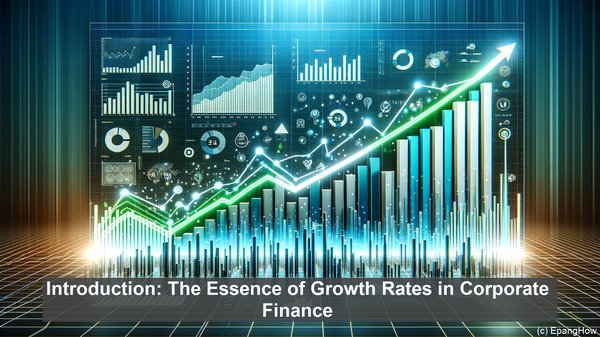Introduction: The Essence of Growth Rates in Corporate Finance
Hello everyone, and welcome to our article on the internal growth rate and the sustainable growth rate in corporate finance. When it comes to assessing a company’s growth potential, these rates play a pivotal role. While they may seem similar at first glance, they have distinct characteristics and implications. Let’s dive deeper into these concepts.
Defining the Internal Growth Rate: A Company’s Self-Sustained Growth Potential
The internal growth rate, as the name suggests, refers to the maximum rate at which a company can grow using only its internal resources. In other words, it is the growth rate a firm can achieve without resorting to external sources, such as debt or equity financing. This rate is determined by factors such as the company’s retained earnings, profit margins, and asset turnover. It essentially represents the company’s ability to generate growth through its own operations.

Unveiling the Sustainable Growth Rate: Incorporating External Factors
While the internal growth rate focuses solely on internal resources, the sustainable growth rate takes into account both internal and external factors. It considers the company’s ability to grow while also maintaining its financial stability. In addition to the factors considered in the internal growth rate, the sustainable growth rate factors in the company’s dividend policy and its capacity to raise external funds. This rate provides a more holistic view of a company’s growth potential, considering both its internal capabilities and its ability to tap into external resources.
Calculating the Internal Growth Rate: A Simple Formula
Calculating the internal growth rate is relatively straightforward. It can be derived using the formula: Internal Growth Rate = Retention Ratio * Return on Assets. The retention ratio represents the portion of earnings that is reinvested in the company, while the return on assets measures the company’s efficiency in generating profits from its assets. By multiplying these two factors, we can determine the internal growth rate, indicating the company’s self-sustained growth potential.

The Sustainable Growth Rate Formula: A Comprehensive Assessment
The sustainable growth rate, on the other hand, is derived using a more comprehensive formula. It is calculated as: Sustainable Growth Rate = (Retention Ratio * Return on Equity) * (1 – Dividend Payout Ratio). Here, the retention ratio and return on equity are similar to the factors in the internal growth rate formula. However, the dividend payout ratio, which represents the proportion of earnings distributed as dividends, is also considered. By factoring in the company’s dividend policy, this formula provides a more accurate depiction of the sustainable growth rate.
Interpreting the Rates: Insights into a Company’s Growth Potential
Both the internal growth rate and the sustainable growth rate offer valuable insights into a company’s growth potential. A high internal growth rate indicates that the company can achieve significant growth using its own resources, which is often seen as a positive sign. On the other hand, a low internal growth rate may suggest that the company needs to explore external financing options to fuel its growth. Similarly, a high sustainable growth rate implies that the company can grow while maintaining its financial stability, which is a desirable characteristic. Conversely, a low sustainable growth rate may indicate that the company needs to reassess its growth strategies to ensure long-term viability.
